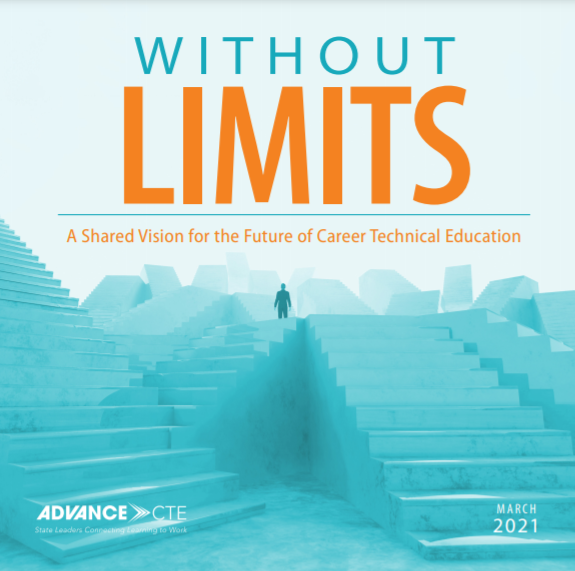 In March 2021, Advance CTE, with the support of over 40 national organizations, released Without Limits: A Shared Vision for the Future of Career Technical Education (CTE Without Limits). The shared vision challenges local, state and national CTE practitioners to boldly close equity gaps in educational outcomes and workforce readiness and leverage Career Technical Education (CTE) as a catalyst for ensuring that each learner can achieve success in the career of their choice.
In March 2021, Advance CTE, with the support of over 40 national organizations, released Without Limits: A Shared Vision for the Future of Career Technical Education (CTE Without Limits). The shared vision challenges local, state and national CTE practitioners to boldly close equity gaps in educational outcomes and workforce readiness and leverage Career Technical Education (CTE) as a catalyst for ensuring that each learner can achieve success in the career of their choice.
Advance CTE released Leveraging Federal Investments to Advance a Shared Vision for the Future of Career Technical Education. This new implementation resource will help state CTE leaders fully realize the ability to design a cohesive, flexible and responsive career preparation ecosystem that works across state systems for the full continuum of learners and is aligned to federal and state talent pipeline investments and overall strategies.
Some states have lead the charge in providing promising practices that strategically connect the five vision principles and existing allowable activities under the following funding streams:
- The Strengthening Career and Technical Education for the 21st Century Act (Perkins V);
- Workforce Innovation and Opportunity Act (WIOA);
- Every Student Succeeds Act (ESSA); and
- Higher Education Act (HEA).
PRINCIPLE 3: Each Learner Skillfully Navigates Their Own Career Journey
The Washington state Workforce Training and Education Coordinating Board created Career Bridge as Washington’s one-stop source for career and education planning. With the collaboration of multiple state agencies and supported by braided funding, the site allows the full continuum of learners to explore careers, view job trends and find education.
PRINCIPLE 4: Each Learner’s Skills Are Counted, Valued and Portable
Two- and four-year faculty and administrators from across Colorado came together in 2018 to propose changes to the Credit for Prior Learning policy established in 2015 that guaranteed acceptance of credits earned through Advanced Placement and International Baccalaureate exams and course challenge options when a learner transferred. This group advocated for the inclusion of Prior Learning Assessments such as the College Level Examination Program, DANTES Subject Standardized Tests and portfolio reviews in the transfer agreement. For more information and additional state examples check out, Developing Credit for Prior Learning Policies to Support Postsecondary Attainment for Every Learner.
Leveraging and focusing the combined influence of the assets provided through the above funding streams will increase a state’s ability to provide the full continuum of learners access to equitable, skills-based education and preparation for the ever-evolving future of work. View more action steps and exemplars by reading the full implementation brief here.
Brittany Cannady, Senior Associate Digital Media
